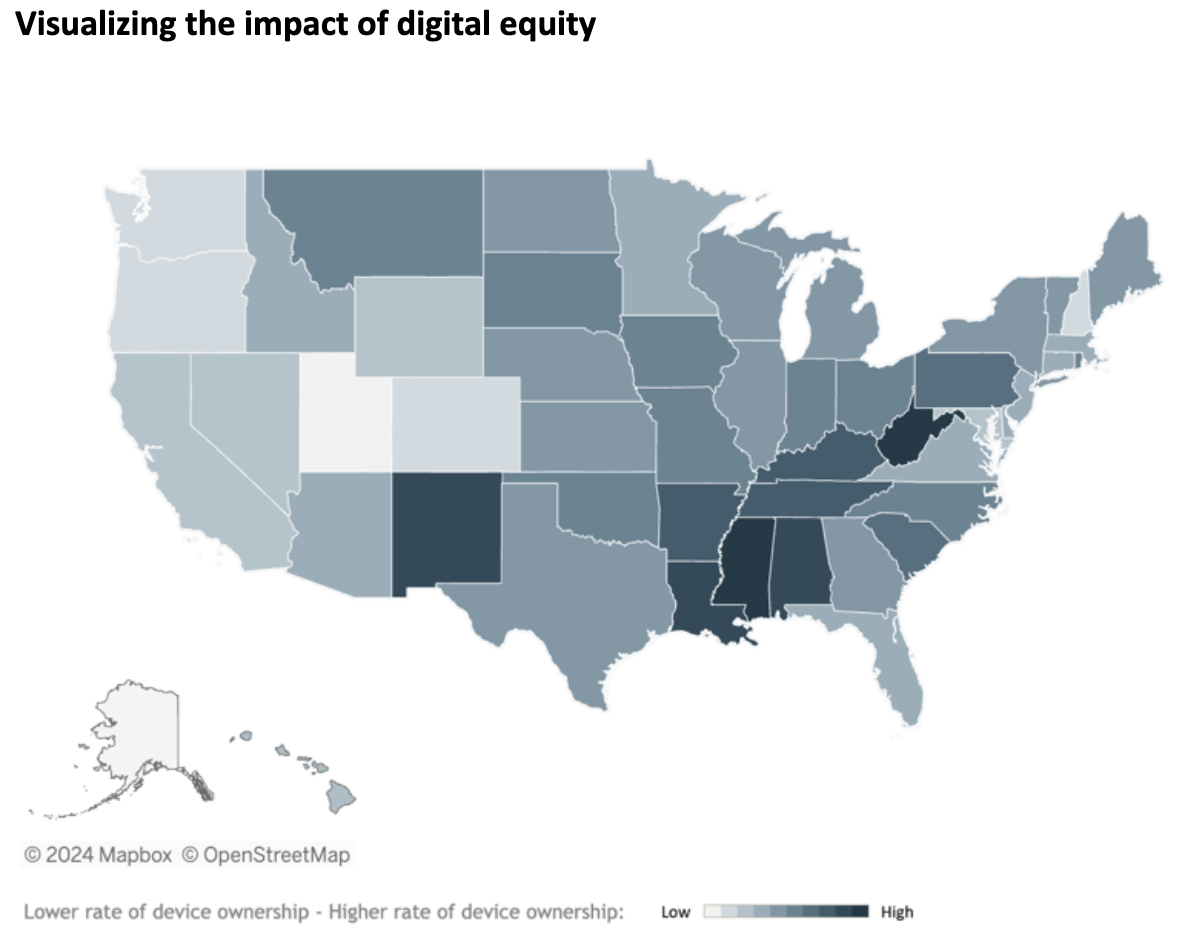
Digital Equity: Advocating For Where It Begins


Even though 56 million new computers are sold in the US every year, 36 million Americans across nearly 14 million households still don’t have a computer they can call their own. These populations experiencing a digital equity gap are typically the most marginalized, including people at 150 or 200% of the poverty level, which often includes low-income citizens with disabilities, veterans, and people in rural areas.
Of course, maintenance and upgrades mean many computers aren’t immediately available, but this still sounds like it should be a fixable problem. Yet in much the same way that there is enough food produced in the world to feed everyone but so many go hungry, systems don’t function to get computers where they could be going to help close the digital equity divide.
Forty years ago, Digitunity (pronounced like ‘opportunity’) began its work to create the connective tissue and systems that would get more computers – large-screen devices, not mobile phones – into the hands and homes of people who need them. Creating greater digital equity is a mission that should interest all data leaders, because so many people still live without this basic technology.
Solving digital equity problems requires a holistic approach. In our case, this means:
- Working with nonprofits across the US that serve the most vulnerable people
- Contracting with a network of nonprofit technology refurbishers, who receive devices from corporations and government and give them back to the community at little or no cost
- Advocacy at every level of government, which includes advising states and counties on creating sustainable device ecosystems. Recently we had a bill passed in Congress that creates the means to pass along federal surplus computers to be refurbished for local communities
- Thought leadership, often co-developed with researchers or other practitioners, to raise awareness of issues around digital equity
- Working with companies to create policies that allow them to donate technology into the device ecosystems we have created. This also creates opportunities for these companies to yield better results on their ESG goals

What does digital equity look like when you visualize it? Our interactive Technology Gap Map displays the disparities across states. The results can be telling. For example, although 5.6 percent of Utah’s citizens have no computer, 16.21% in New Mexico lack a large-screen device.
The effect of receiving a computer can be transformative. In one program we organized that was underwritten by 3M, we matched 100 computers and associated digital literacy training with needy adults. Some participants were able to take cybersecurity and coding classes as well. At the end of the program, fully 50 percent were able to secure either a new job or a better job than they’d had previously. One of us (Karisa) comes from the Providence, RI, Public Library system, which offers free Tableau courses as well as a Tableau User Group. These are all vital connections to careers in data.
The good news is, approximately $65 billion has been slated for our infrastructure around internet skills and, we hope, devices. Computers are foundational to create digital skills and attract the high-paying jobs associated with them.
What’s discouraging is that a wonderful COVID-era program called ACP – the Affordable Connectivity Program – is about to lose its federal funding in May, 2024. As reported in a recent Wall Street Journal article, more than 22 million people are enrolled and receive free monthly access to the internet through ACP. This access is critical for making telehealth appointments, scheduling vaccines, civic and cultural participation, and of course building digital literacy.
Three ways everyone can help bridge the digital equity divide
Although we always remain optimistic that a surge in computer supply for everyone will put Digitunity out of business, there are three things every data leader can do to help:
- Address policy. Even if a company’s C-Suite says they want to do something about freeing up technology assets, barriers such as lease terms and SaaS lock-ins pop up. Companies need to evolve from philosophical attitudes about digital equity to policy changes at the highest levels that make equity possible. That’s why it’s essential to advocate for a corporate policy that commits a percentage of each company’s computer technology to reuse for the social good.
- Sponsor change. For 40 years, Digitunity has made it a practice never to charge our donors or the 1,600 non-profits in our network. What we do need are corporate sponsors willing to step up for the cause of digital equity.
- Drive awareness. Raise the digital equity issue. Tell your colleagues and managers what groups like Digitunity are trying to do as an umbrella organization in a very specific niche – closing the digital divide through device ownership based on thoughtful reuse versus disposal. Email your congressperson about the ACP bill as well. Corporate leadership with deep influence is incredibly helpful in moving the needle.
Digital opportunity, as we have rephrased it, is digitunity. That’s a cause all data leaders can get behind.




